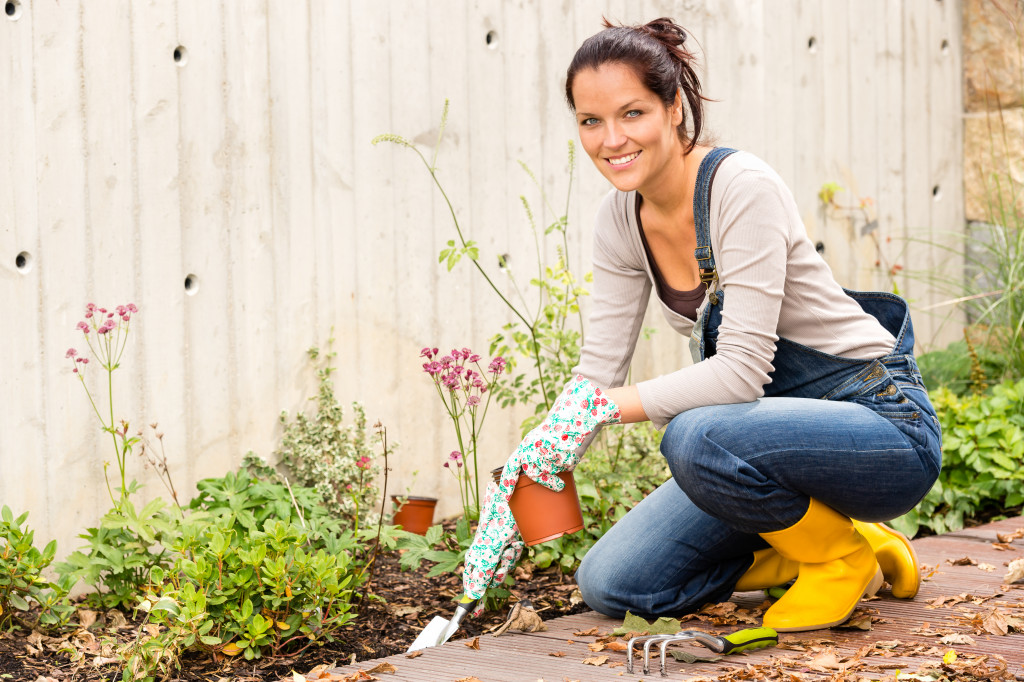Perhaps one of the most self-fulfilling things you can do is build your very own garden. You could opt to plant bright-colored florals or create a kitchen garden. Or why not both? Nonetheless, for a newbie gardener, starting a garden can be a daunting process.
But starting a garden does not have to be complex. All you have to do is to break down your garden project into easy and manageable steps. For you to ease your way into gardening, you need to do it at your pacing. With dedication and hard work, you will soon reap the rewards of your efforts.
Check out these steps that will guide you in creating your garden from scratch.
Building Your Garden in Easy Steps
Think of Your Plant Options
The firstmost thing to do when you plan on building a garden is to consider what you will plant. Do you want a vegetable garden? An herb garden? A flower garden? Answering these questions makes planning your garden layout feels like a breeze, and all the rest of the steps easier to follow.
If you plan on growing vegetables, fruits, and herbs for consumption, select ones that your family will eat, or at least they are willing to try. If you opt for flowers for their color, elegance, and fragrance, figure out whether you would want annuals or perennials.
Flowers, vegetables, herbs, and fruits ━ each or even a mix of these make a beautiful garden. However, each would demand a different maintenance requirement. To make it easier for you, start small until you master how to take care of each.
Invest in Basic Gardening Tools
How can you work in your garden without your tools, right? With the correct tools, you will enjoy working on your garden instead of feeling like it is a daunting chore. Consider investing in the following basic gardening equipment before proceeding to the succeeding steps.
- Garden shovel
- Garden hoe
- Scuffle hoe
- Dirt rake
- Leaf rake
- Hand tools
Having good gardening tools saves you a lot of time and effort. It also helps keep your back healthy. Never go cheap on your tools. Instead, shop on yard sales for bargains or purchase them at your local garden center. Like a good knife, keep your garden tools sharp and clean always. It helps to have the right wearable gear, such as gardening gloves and denim jeans, to protect yourself.
Find the Right Spot
Before you even start working on your garden, you need to figure out what areas of your yard receive full sun, partial, and full shade. Never skip this step because plants need to have their need the right amount of sunlight to thrive. Most vegetables and flowers, though, need at least 6 hours of full sun each day.
Clear the Ground
Another important step is to get rid of all the grass or sod covering the area you plan on building your garden. Slice the sod into sections to make removal easier. Using a spade, dig under the sod. You may opt to transplant your removed grass in another area of your lawn or put them into a compost pit.
Enhance the Soil
A fertile soil results in better plant yield. Most residential soil requires boosting, particularly in newly constructed houses. Your soil might be too wet, dry, or infertile. To remedy this problem, all you need is to add organic matter to your soil. These include compost, dry grass clippings, old manure, and decaying leaves.
Select Your Plants

Most gardening newbies overlook the importance of picking the right plants to grow in their garden. Most often, they would buy the plants that wow them. However, selecting the right plants is crucial since each differs in its climate, soil, and sunlight needs.
For beginners, these are some of the easiest plants to start with:
- Annuals: Cosmos, marigolds, sunflower, zinnias, and geraniums
- Perennials: Black-Eyed Susans, salvias, peonies, and daylilies
- Vegetables & Fruits: Cucumbers, garlic, strawberries, squash, bell peppers, blackberries, and raspberries.
Be Generous on the Mulch
Adding a generous amount of mulch to your garden not only helps make its maintenance much easier but also helps enrich the soil. The moisture of mulch keeps weeds from germinating, and it also means you do not have to water your plants as often.
There are plenty of varieties of mulches. Among the best ones are straw, cocoa bean shells, and bark.
Maintain Your Garden
Help your garden flourish by keeping up with gardening chores. Pull out weeds. Water the plants. Remove dying and diseased vegetations. Eliminate insects feeding off your garden. Remember as well to harvest your vegetables when they are ready.
Now that the essential steps are all covered, you can start building your garden from scratch. Remember to stay hydrated, especially during the hot summer months.